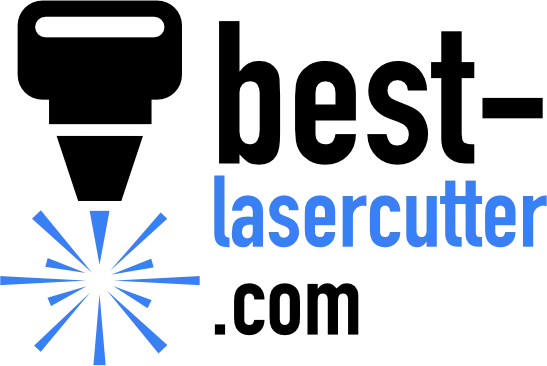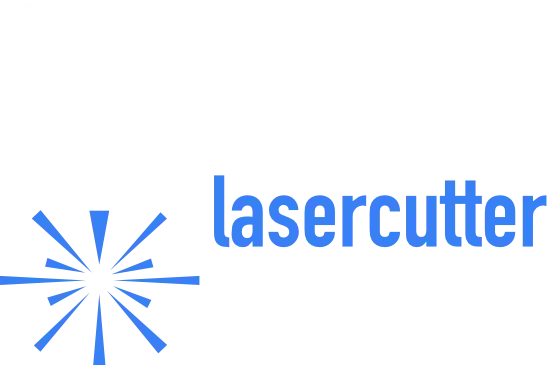Ortur R1 Review – Foldable Cube Laser in Focus
Compact, foldable diode engraver with IR option – safe, portable, and beginner-friendly, but limited in size and power compared to other laser cubes.
1. Ortur R1 in Review
The Ortur R1 is Ortur’s take on the booming market of so-called laser cubes – compact, enclosed, or semi-enclosed engravers designed for portability and ease of use. Instead of a bulky frame that dominates your desk, the R1 folds up like a little toolbox. At 2.4 kg, you can literally carry it under your arm to a workshop, maker fair, or even a café (though we wouldn’t recommend firing it up next to the cappuccino machine).
It comes in different flavors:
- 5W blue diode (450 nm) for wood, acrylic (non-clear), leather, and plastics.
- 1.3W IR laser (1064 nm) for metal marking (logos, serial numbers, jewelry).
- Or a dual-laser version combining both.
That flexibility makes the R1 interesting – but the trade-off is a tiny working area (~100 × 100 mm) and modest cutting power.
Big Strengths
- Foldable, portable cube design (no assembly required)
- Dual-laser option: blue + IR for versatile engraving
- Safer than open frames thanks to lid and tilt sensors
Trade-Offs
- Very small work area (max. ~100 × 100 mm)
- Weak cutting ability (2–3 mm plywood with multiple passes)
- No camera, autofocus, or native air assist
Best For
- Hobby engraving of keychains, wallets, coasters
- Personalized gifts on wood, leather, or coated metals
- Portable use at fairs, craft shows, or in shared spaces
Get $10 off with code Lasercut
2. What’s Inside the Ortur R1?
Unlike open-frame hobby engravers, the R1 is about plug-and-play convenience. Unfold, plug in, drop in your keychain blank, and you’re off.
- The 5W diode module engraves wood, leather, cork, and plastic tags. Cuts? Only thin stuff – maybe 2–3 mm plywood after multiple passes.
- The 1.3W IR option is the selling point: you can mark stainless steel, aluminum, and other metals – something most diode cubes can’t do. Don’t expect deep cuts, though.
- In dual mode, you can switch between both lasers in software, making it more versatile than single-laser cubes.
Speed tops out around 5,000 mm/min (~83 mm/s) – fine for small jobs, but far behind galvo systems like the xTool F1 Lite (4,000 mm/s).
2.1 Ortur R1 Specifications
- Laser modules
- Diode(Portable)455 nm · 5 WDiode-IR1064 nm · 1.3 W
- Work area
- 100 × 100 mm
- Max. speed
- 83 mm/s
- Connections
- WIFIUSBSD-CARD
- Air assist
- No
- Camera
- No
- Enclosure
- Yes
- Autofocus
- No
- Operating systems
- WindowsmacOSLinuxiOSiPadOSAndroid
- File formats
.ai.svg.dxf.pdf.hpgl.plt.rd.png.jpeg.bmp.tiff.tga.gif.jpg- Weight
- 2.4 kg
- Warranty
- 12 months
- Release
- 2025-09-30
- Laser class
- Class 1
3. What Makes the Ortur R1 Special – and Who Is It For?
The R1’s charm is in its foldable portability and the option to do both classic diode work (wood/leather) and basic metal marking (IR). Most cheap cubes (like Atomstack Swift or iCube) stick with a single blue diode, which makes them cheaper but also less flexible.
3.1 Hobbyists & Beginners
If you’re just getting into lasers and want something safe, compact, and not intimidating, the R1 is a good start. The lid protects your eyes, and the safety sensors shut things down if it tips. Think of it as a “starter cube” that won’t scare your family.
3.2 Craft Sellers & Side Hustlers
The IR option is a neat trick for custom jewelry, dog tags, or branding metal gadgets. For Etsy shops that want to offer both wood/leather products and basic metal marking, the R1 gives that range without stepping up to a fiber laser.
3.3 Limits
The small 100 × 100 mm area is the real bottleneck. If you want to make signs, trays, or large cutting boards, you’ll hit the limit instantly. And for cutting? Even 3 mm plywood will need multiple passes. For serious wood cutting, a bigger desktop diode (like Ortur LM3 or Atomstack A20 Pro) or a CO₂ system is the better route.
4. Cube Competition – Where Does R1 Fit?
The R1 sits in a crowded cube market. Let’s compare:
- Atomstack Swift: Larger 300 × 300 mm work area, up to 12W diode, but open-frame (less safe).
- iCube: Super-budget cube (5–10W diode), small size, no IR, slower and less refined. Good as a toy, but limited.
- xTool F1 Lite: Galvo system, blazing fast (4,000 mm/s), safer closed design – but pricier.
- LaserPecker 4: Premium dual-laser cube (blue + IR), more polished than R1, but much more expensive.
The Ortur R1 is a middle ground: safer and more flexible than Swift/iCube, cheaper than F1 Lite or LaserPecker 4.
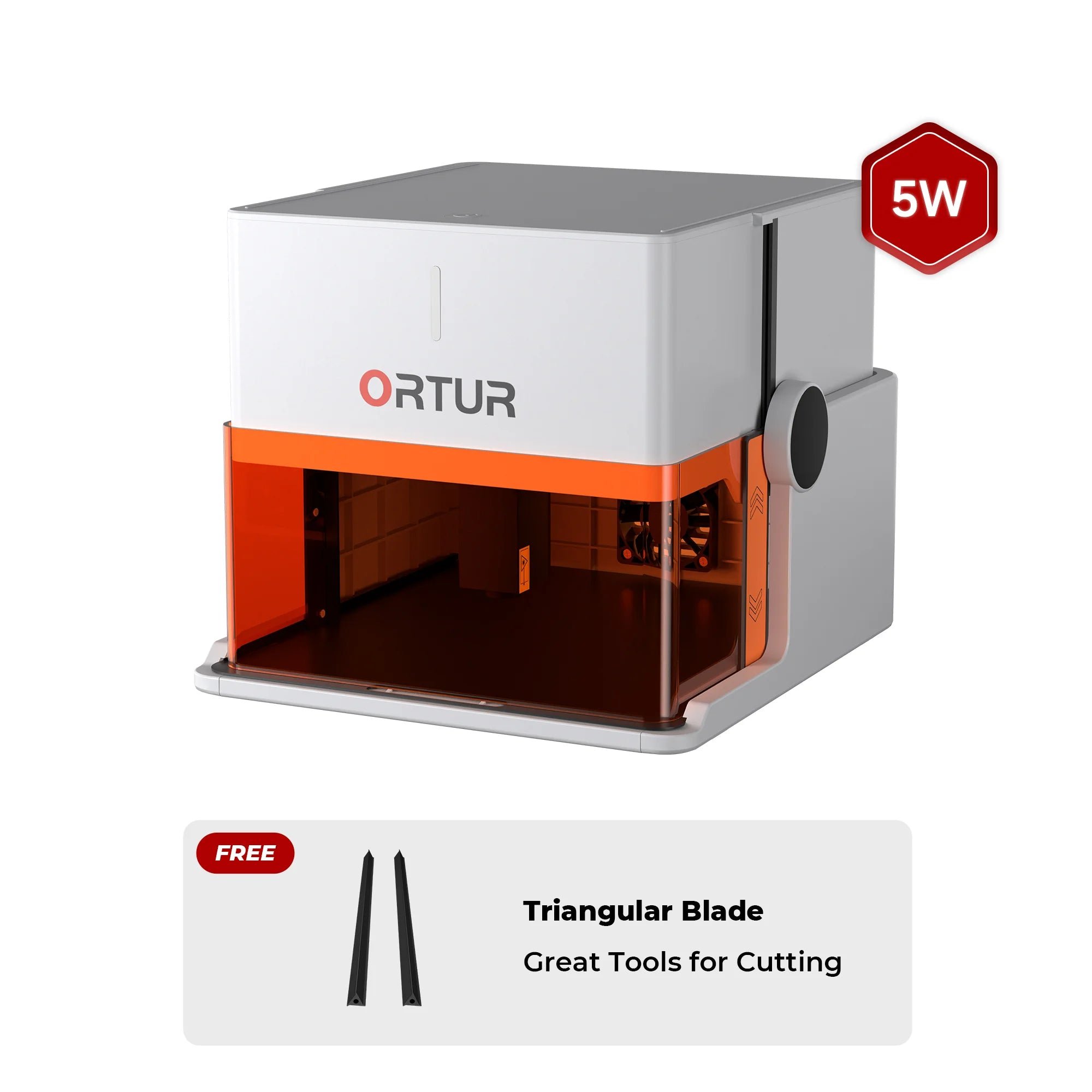
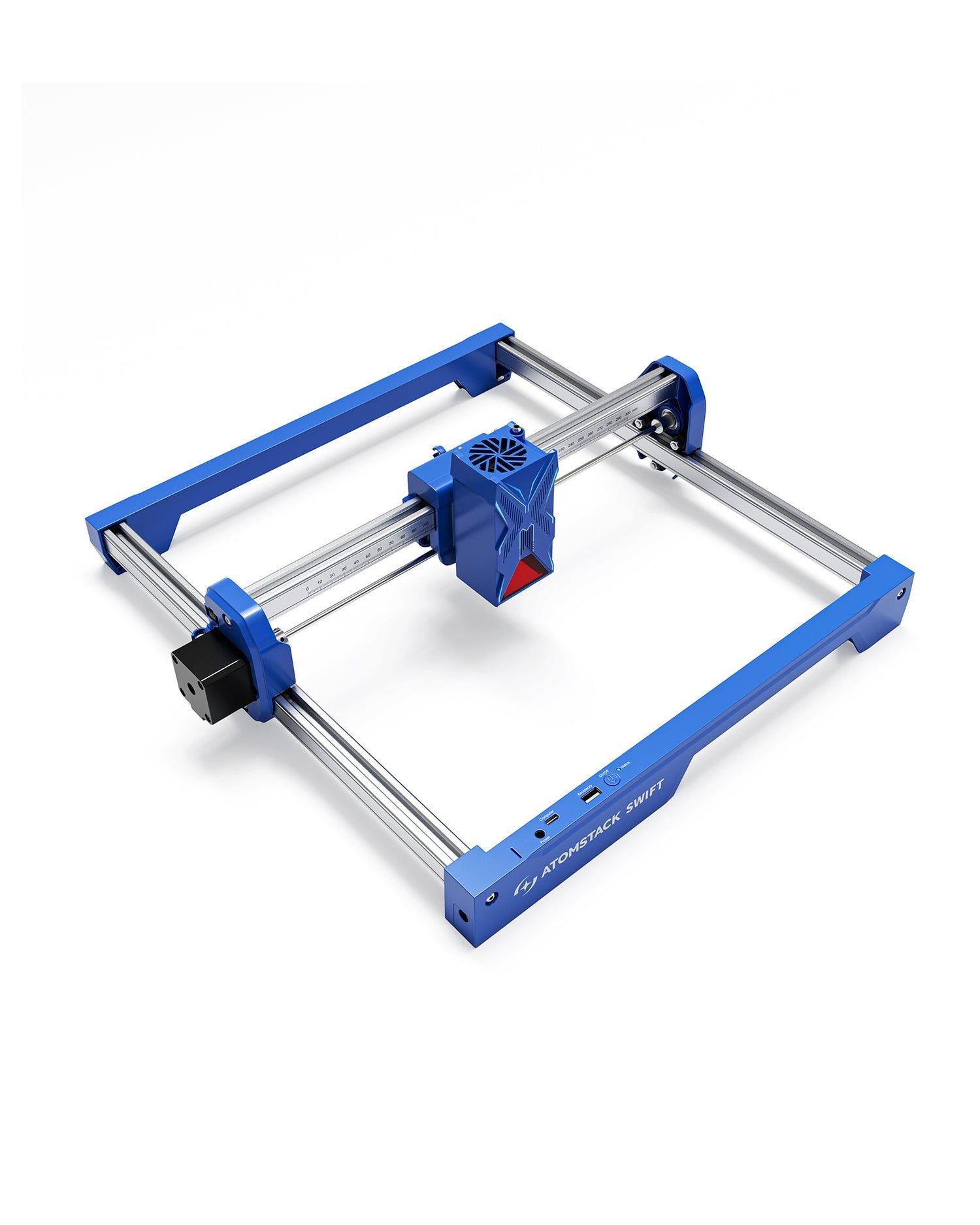
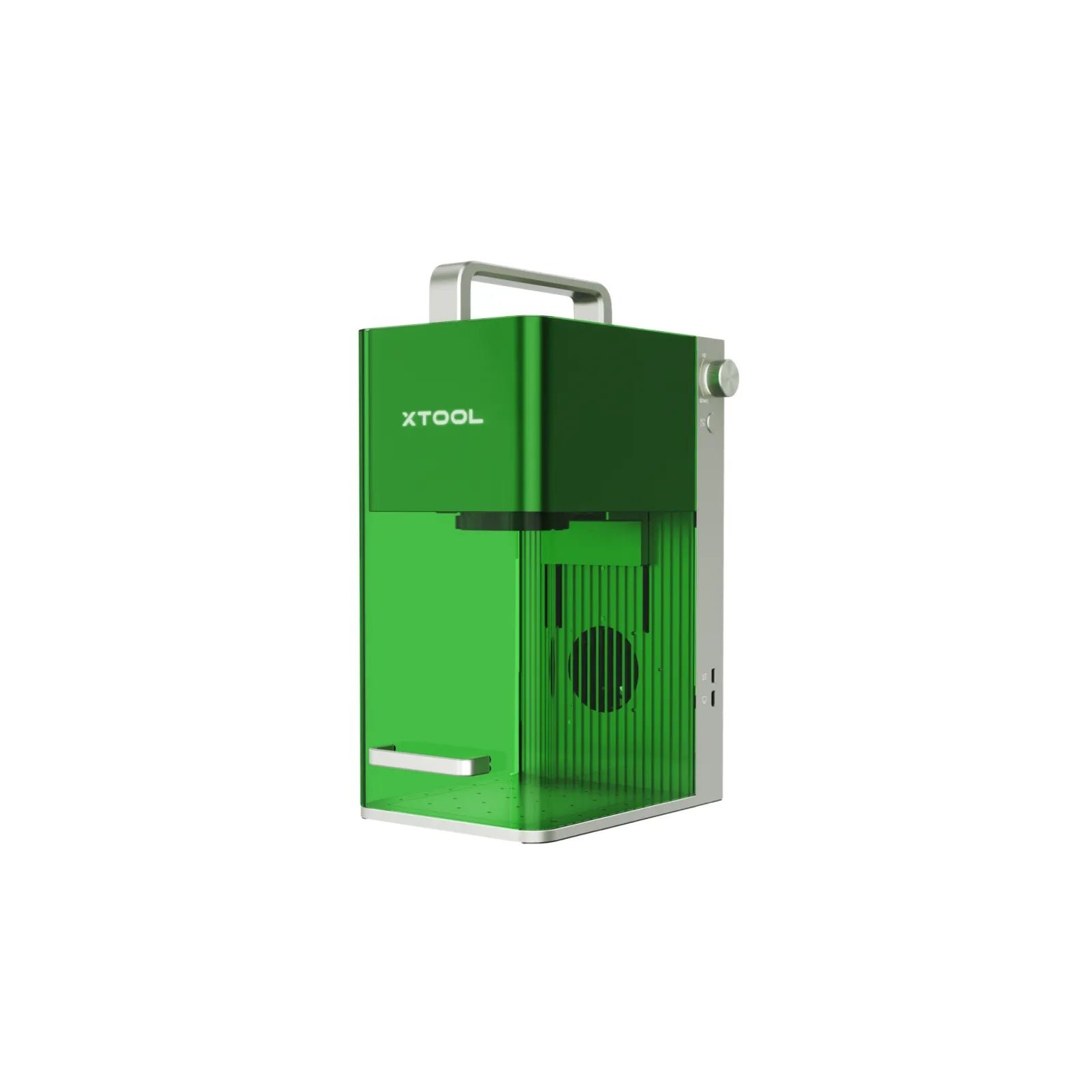
5. Accessories & Add-ons
The R1 doesn’t need much, but a few extras help.
5.1 Rotary Module for Ortur R1
Lets you engrave cylindrical objects (cups, bottles, mugs). Especially useful if you sell custom drinkware.
- Rotary$216.30View now
5.2 Ventilation / Purifier
Even small diodes create smoke. If you’re indoors, you’ll want a purifier or at least a vent hose.
- Air Purifier$270.65View now
5.3 Air Assist
Not included. Optional DIY air assist can help when cutting wood, though engraving usually doesn’t need it.
- Air Assist Kit$96.74View now
6. Pros & Cons
Pros & Cons
- Pros
- Extremely portable and lightweight (2.4kg)
- No assembly required, ready to use out of the box
- Fully enclosed Class 1 safety design
- App control with presets makes it beginner-friendly
- Dual laser option for engraving both non-metals and metals
- Offline engraving support
- Cons
- Small work area (max 100x100mm)
- Low power not suitable for cutting
- No autofocus, camera, or air assist
- Not compatible with accessories like rotary rollers
7. Conclusion – Is the Ortur R1 Worth Buying?
The Ortur R1 is basically the “Swiss Army Cube” of budget lasers: small, foldable, and flexible enough to handle both wood engraving and metal marking (if you spring for the IR). It’s safer than bare-bones open frames like the Swift or iCube, and cheaper than high-end galvo cubes like the F1 Lite.
But: its tiny work area and weak cutting power mean it’s best for personalization, not production. If your dream is engraving dog tags, leather wallets, or keychains, the R1 is a neat portable companion. If you want to cut furniture panels, you’ll need something much bigger (and heavier).
Verdict: Great for beginners, hobbyists, and small craft sellers who want safety and IR metal marking in a portable form. Outgrown fast if you need serious size or power.

